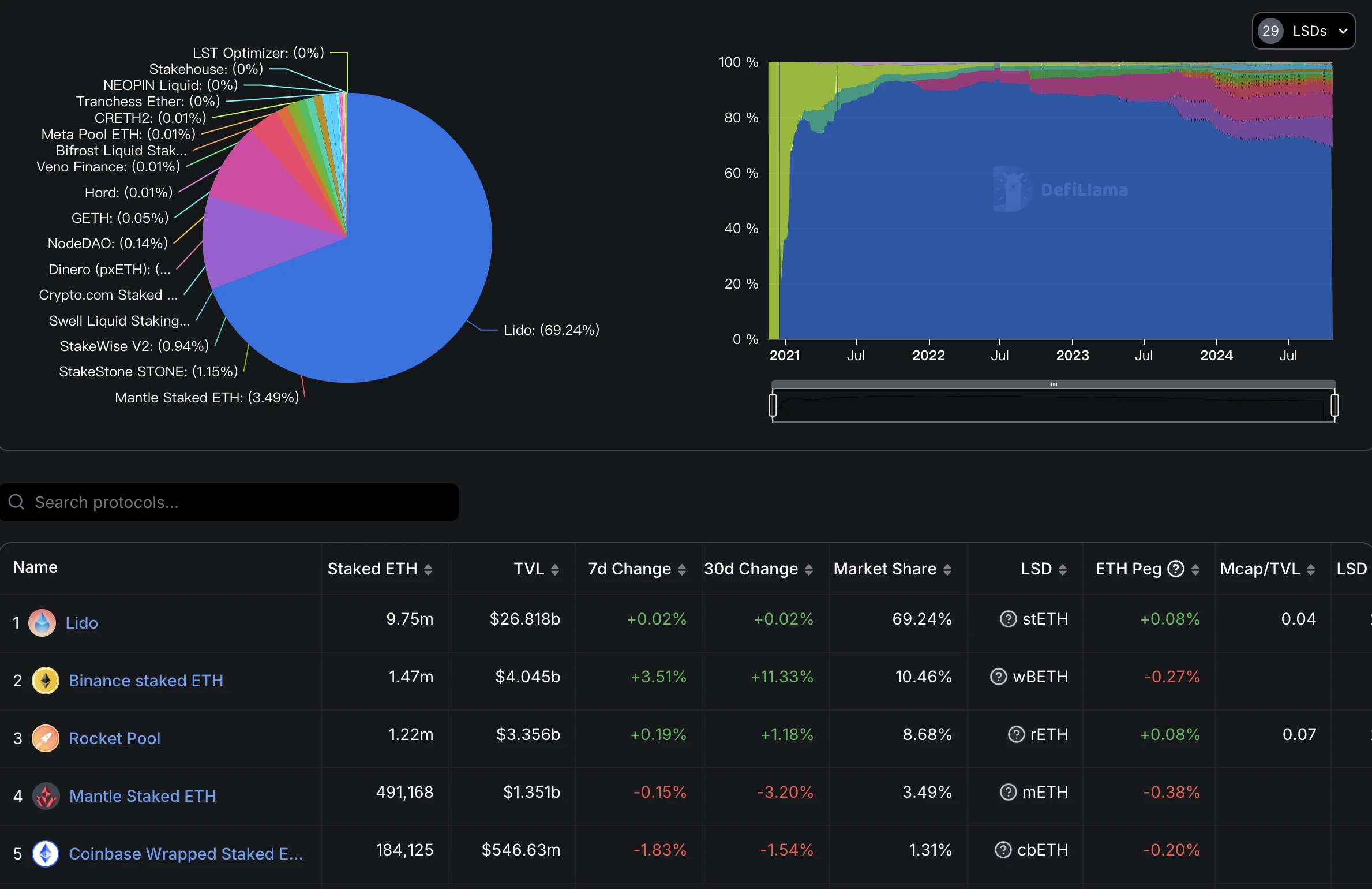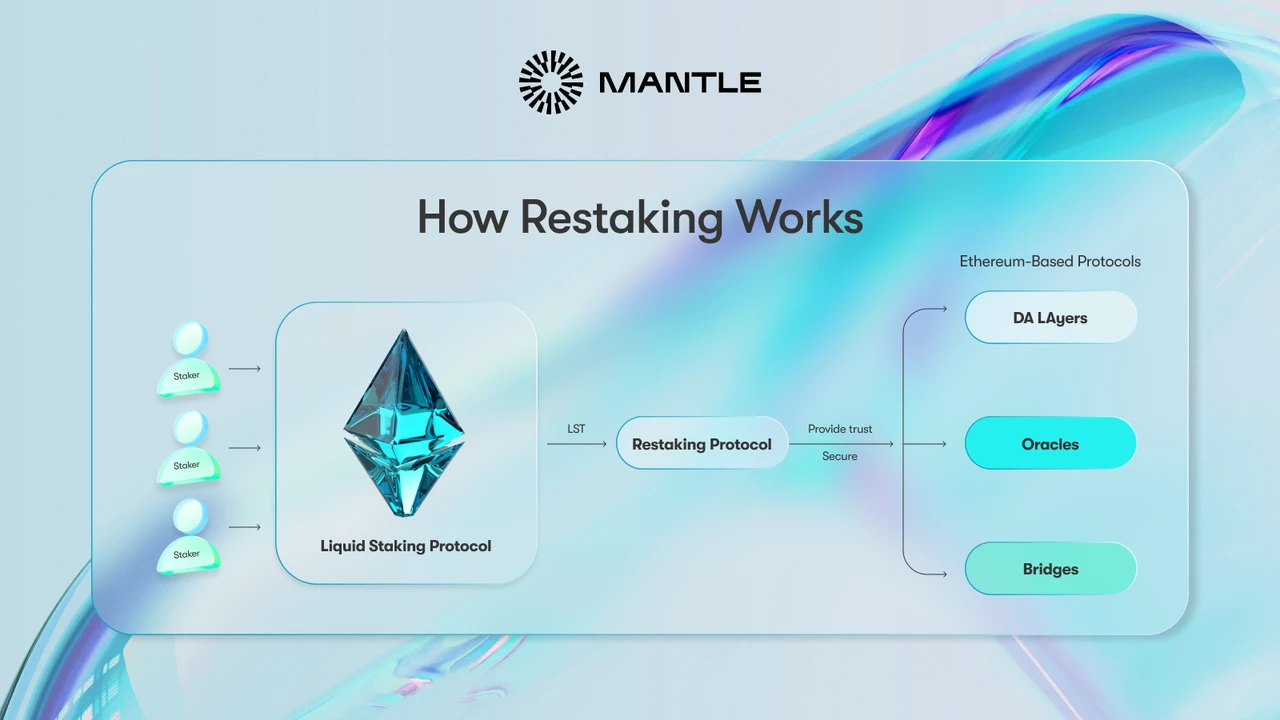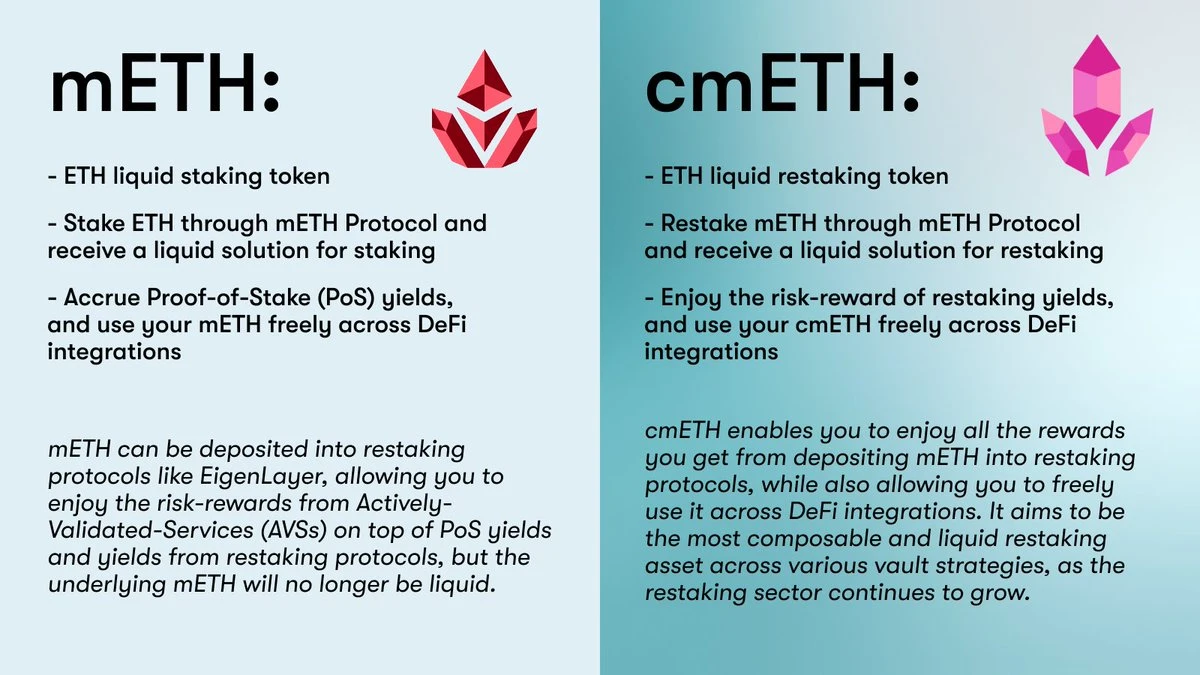
Following EigenLayer, another heavyweight player in the staking track is about to issue coins.
Mantles liquidity staking/re-staking protocol mETH Protocol has recently announced on its official social media many times that its governance token will be released soon. According to the clues currently available to Odaily Planet Daily, the token is expected to officially conduct TGE at the end of October, when about 15% of COOK may enter circulation.

mETH Protocol business breakdown: spanning the two tracks of staking/re-staking
The birth of mETH Protocol can be traced back to August 2023, when mETH Protocol was positioned as a decentralized, permissionless liquidity staking protocol , intended to serve as Mantles second core product after the Layer 2 network, and to work together with the entire Mantle ecosystem to create synergy.
On November 27, 2023, mETH Protocol was officially launched. The first core product of the mETH Protocol itself is the liquidity derivative token (LST) mETH, which has a utility similar to Lidos stETH and Rocket Pools rETH , allowing users to participate in Ethereum staking and earn income while continuing to maintain asset liquidity, and transfer, sell or invest in other DeFi opportunities at any time.
In the nearly one year since its launch, mETH has attracted widespread favor from the market. In the early stage, with the support of liquidity incentive subsidies, the amount of ETH pledged by mETH once exceeded 500,000. Although the subsidies have been stopped and the yield has returned to the basic staking reward level (about 3.6%), the amount of ETH pledged through mETH is still more than 490,000.
DeFillama data shows that the total locked value (TVL) of mETH Protocol ranks fourth among all liquidity staking protocols, second only to Lido and Rocket Pool, which started earlier, and Binance Staked ETH, the centralized liquidity staking product of the leading exchange Binance.

In addition, according to the official data of mETH Protocol, mETH has now been integrated into 38 different platforms or protocols in multiple categories, including Bybit, Uniswap, StarGate, EigenLayer, Symbiotic and other mainstream platforms or protocols.
Since the beginning of this year, the narrative of re-staking has gradually emerged. Re-staking is actually an attempt to expand the boundaries of node verification services, using AVS to expand node verification services that were originally only used for network consensus maintenance to more segmented scenarios such as oracles, sequencers, and cross-chain bridges. In turn, the latter do not need to build their own verification system and can directly use the security of the Ethereum network. Based on this background, mETH Protocol decided to expand its service scope.

In May, the mETH Protocol community passed the governance proposal MIP-30, deciding to launch a new liquidity derivative token (LRT) cmETH around the re-staking scenario, and to issue a governance token COOK focused on the mETH Protocol itself (details below).
The utility of cmETH is somewhat similar to Renzos ezETH and ether.fis eETH, but it can access the income opportunities of multiple re-staking protocols through a single token - allowing users to re-stake mETH, while earning income through EigenLayer, Symbiotic, Karak, etc., while continuing to maintain asset liquidity, and transfer, sell or invest in other DeFi opportunities at any time.
Compared with mETH, the core advantage of cmETH is that in addition to the basic staking income, it also covers more income opportunities, including the points income from major re-staking (airdrop expectations), re-staking AVS income, etc.; but on the other hand, holding cmETH also means that users need to bear the additional potential risk of fines and confiscations in the re-staking scenario.

In short, cmETH is an option with a higher risk-return ratio than mETH , and is more suitable for users who want to try to obtain higher returns within a certain risk range.
cmETHs four unique advantages
LRT is not new. There are already many mature liquidity pledge protocols on the market, including Renzo (ezETH) and ether.fi (eETH) mentioned above. As a latecomer, cmETH is expected to overtake others by relying on the unique advantages of the fourth layer.
Advantage 1: Coverage of revenue opportunities
The core advantage of the first layer is covering more profit opportunities. Different from other LRTs on the market that adopt a one-to-one form - for example, ether.fis LRT corresponding to EigenLayer is eETH, the LRT corresponding to Symbiotic is weETHS, and the LRT corresponding to Karak is weETHk - cmETH adopts a one-to-many form, which means that a single LRT can simultaneously cover the profit opportunities of the four major basic re-staking protocols such as EigenLayer, Symbiotic, Karak, and Zircuit , achieving killing two birds with one stone (the specific profit distribution of each protocol depends on the investment ratio of the underlying ETH assets).
In this way, mETH Protocol can avoid friction caused by the numerous LRT options and improve user experience. It can also avoid the fragmentation of LRT liquidity and facilitate the further expansion and integration of the token. From the users perspective, you only need to hold cmETH to enjoy the ETH basic staking rewards, AVS rewards from major re-staking protocols, and point rewards (expected airdrops) from major re-staking protocols. In the future, mETH Protocol may further provide COOK as a liquidity incentive.
Advantage 2: Convenience on the CeFi side
The second advantage is the convenience of CeFi. As a project under Mantle, mETH Protocol itself has a deep binding relationship with the leading exchange Bybit . Bybit has also given mETH various brand support, including opening a direct staking channel for mETH on the site, allowing users to hold mETH on the site and earn on-chain points, supporting mETH as a collateral asset, etc.
Looking ahead to cmETH, it can be expected that Bybit will continue to provide in-depth support for the token similar to mETH , making it convenient for cmETH holders to flexibly switch between the CeFi system and the DeFi system and perform various operations.
Advantage 3: Usability on the DeFi side
The third-layer advantage is usability on the DeFi side. cmETH decided to adopt LayerZeros OFT standard at the beginning of its design , allowing users to achieve fast and slippage-free inter-chain bridging within a few minutes, thereby seamlessly integrating into major DeFi protocols in major ecosystems.
As mentioned earlier, mETH has been integrated into 38 different platforms or protocols in multiple ecosystems, and there are reports that mETH Protocol will be expanded to Layer 1 ecosystems such as Berachain and Fuel. It is expected that cmETH will continue this expansion path and achieve rapid integration of multiple ecosystems.
Advantage 4: Proven safety
The fourth layer advantage is proven security. Security incidents in the cryptocurrency field have occurred frequently recently, and even EigenLayer experienced X theft last week.
Currently, most LRT protocols started after the rise of the re-staking narrative and have a relatively short operating time. However, mETH Protocol has proven its code security in the stable operation of LST products over the past year, and recently added audit reports from Blocksec and Quantstamp, making its security relatively more trustworthy.
COOK Token Archives
As of the time of writing, mETH Protocol has not yet released any specific information about COOK’s TGE plan and token economic model through its official social media channels.
Although such information is mentioned in official documents, many key contents are marked as to be finalized, so we will roughly sort out the existing intelligence of COOK, and the specific information is still subject to the official announcement.
First of all, it is clear that COOK will be an independent governance token of the mETH Protocol in terms of utility, and can be used to vote on the future development and strategic planning of the protocol.
COOKs estimated TGE time is the end of October, and the estimated total supply is 5 billion. It is expected that 960 million will be in circulation at the beginning of Genesis, which is 15% of the total supply.
In terms of distribution, as a project under Mantle, as early as the MIP-30 governance proposal in which the Mantle community decided whether to develop the mETH Protocol, it was determined that 30% of the mETH Protocol token supply would be given to the Mantle Treasury.
As for the remaining 70%, the mETH Protocol core contributor team only reserved 10%, and will hand over 60% of the token supply directly to the community . This generous ratio is in stark contrast to the distribution of some LRTs - for example, Renzo once gave 51.56% of the tokens to the team, investors and consultants, which aroused fierce condemnation from the community.
Odaily Note: The above ratios mentioned in official documents are all “estimated values”, and the specific values will be confirmed at TGE.
In terms of community distribution, mETH Protocol has executed a number of community activities to achieve universal distribution of COOK, such as the now-closed Methamorphosis S 1 activity, and the meme project Puff activity mentioned above.
As the end of October approaches, it is expected that mETH Protocol may release more accurate information about COOK through official social media channels at any time. If there are discrepancies in the data at that time, the official information shall prevail.
The most efficient option under the “re-pledge” narrative
As one of the most promising and effective ideas in the cryptocurrency world in the past few years, re-staking can be used to expand the boundaries of node verification services and solve the problem of difficulty in building a reliable verification system at the application layer. As the infrastructure becomes more and more complete, the re-staking service is expected to give full play to its value and utility in the next round of application explosion cycle.
As the part of the re-pledge system that directly faces users, LRT has long faced the problem of having too few available scenarios. mETH Protocols cmETH perfectly solves this user pain point by integrating both CeFi and DeFi, and can simultaneously cover the profit opportunities of multiple re-pledge protocols in a one-to-many manner, solving the liquidity fragmentation problem of LRT.
In the future when re-staking is further implemented and expanded, mETH Protocol is expected to serve as the most efficient participation channel under this narrative, helping users to participate in re-staking services efficiently, conveniently and safely, and COOK is also expected to gradually realize its own value discovery in this process.










